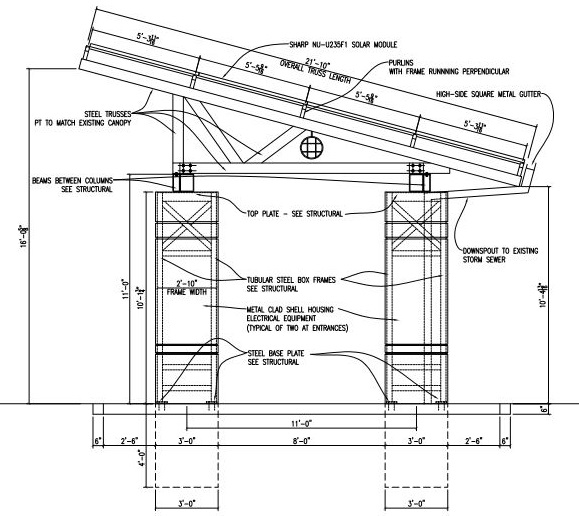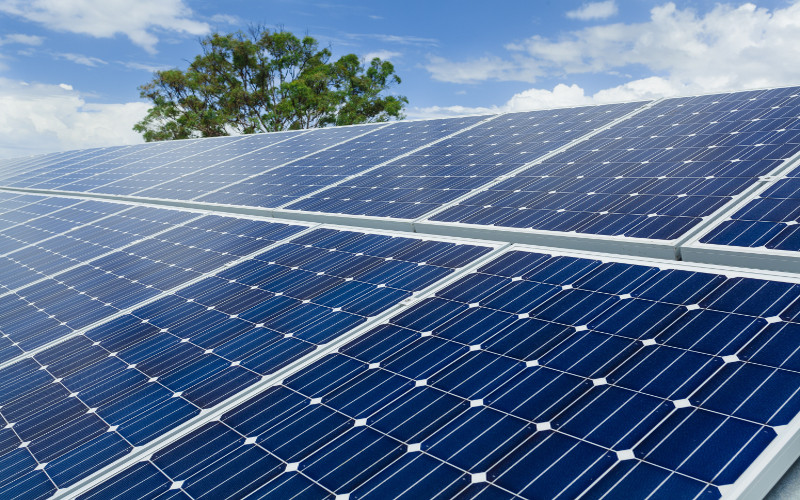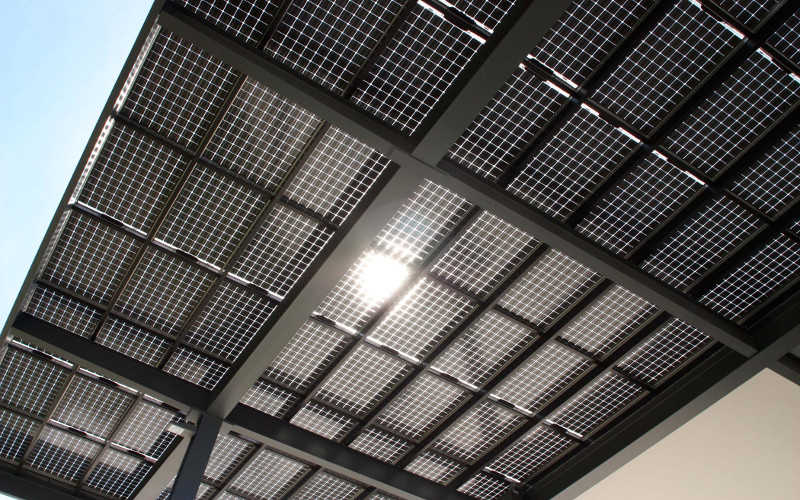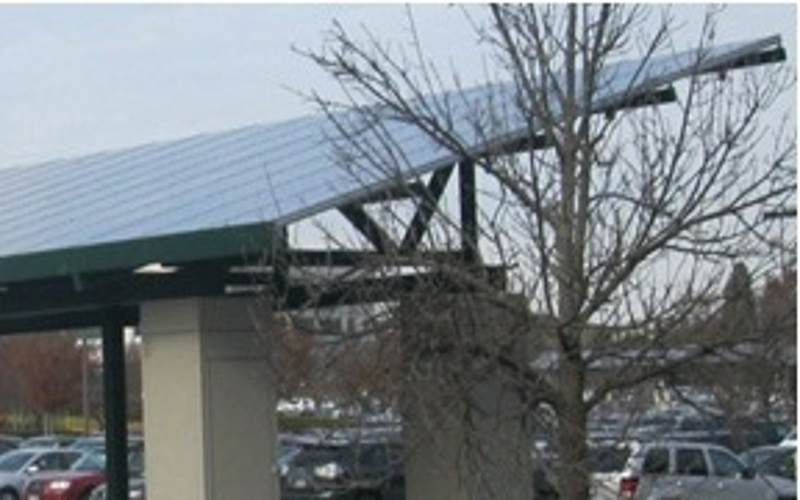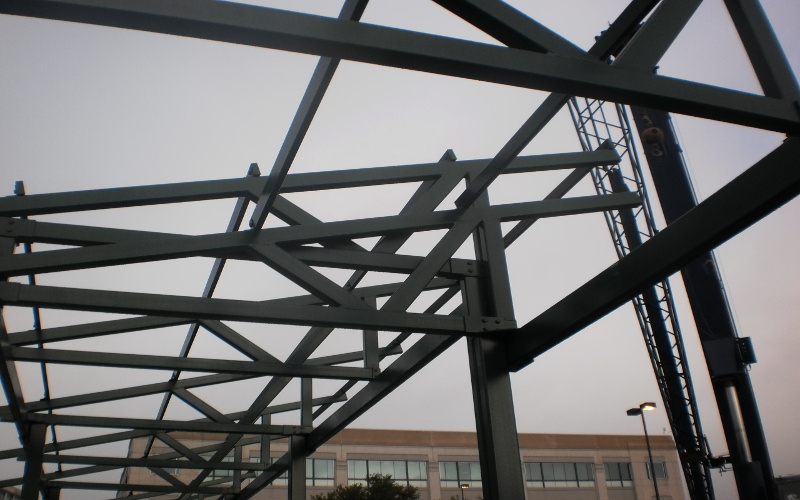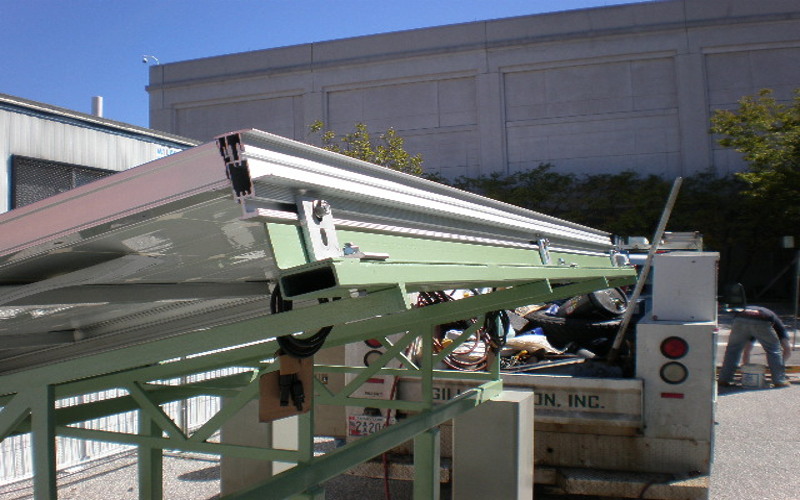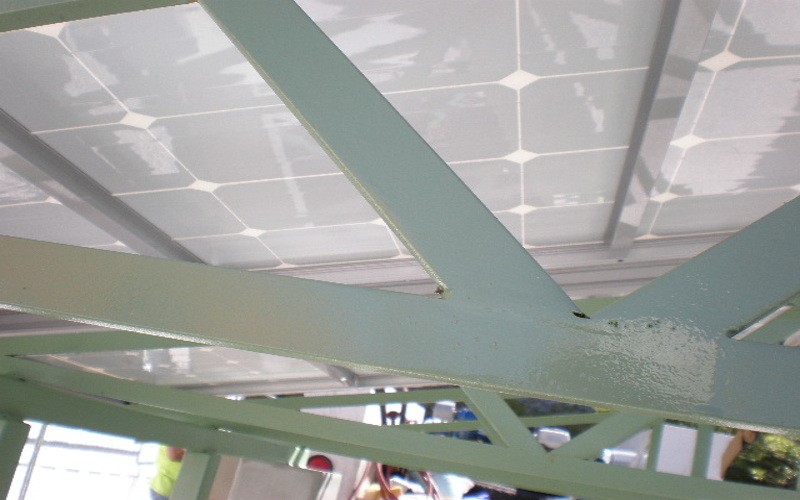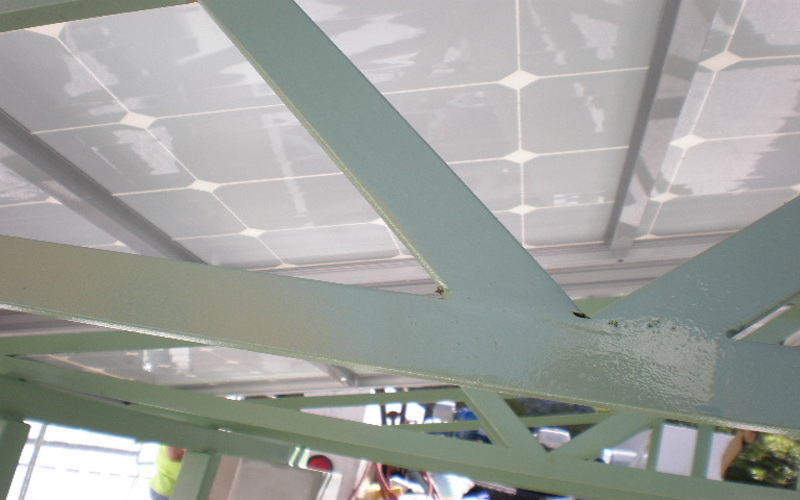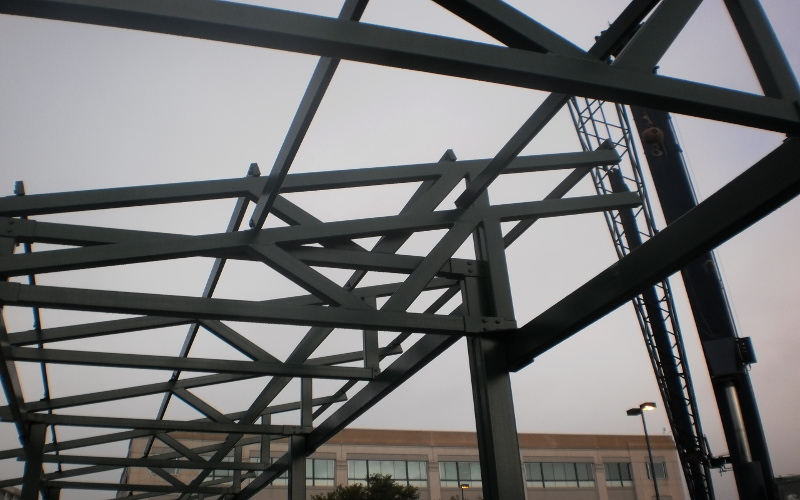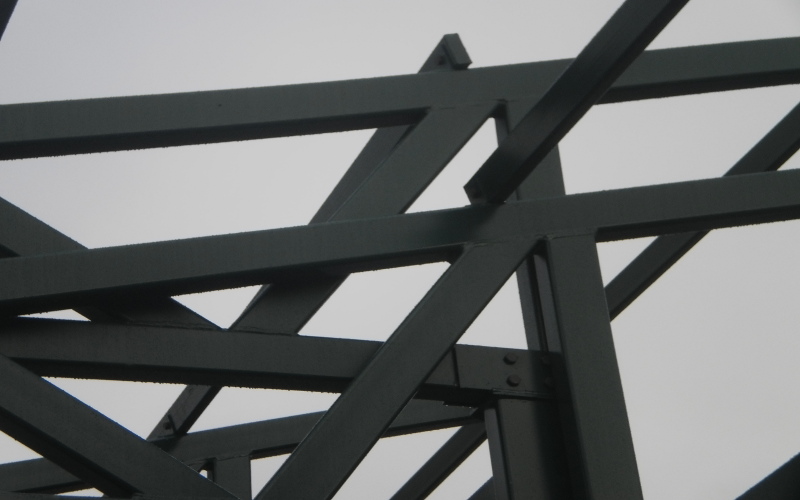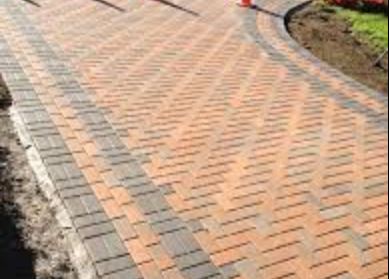Integrated Energy Surety
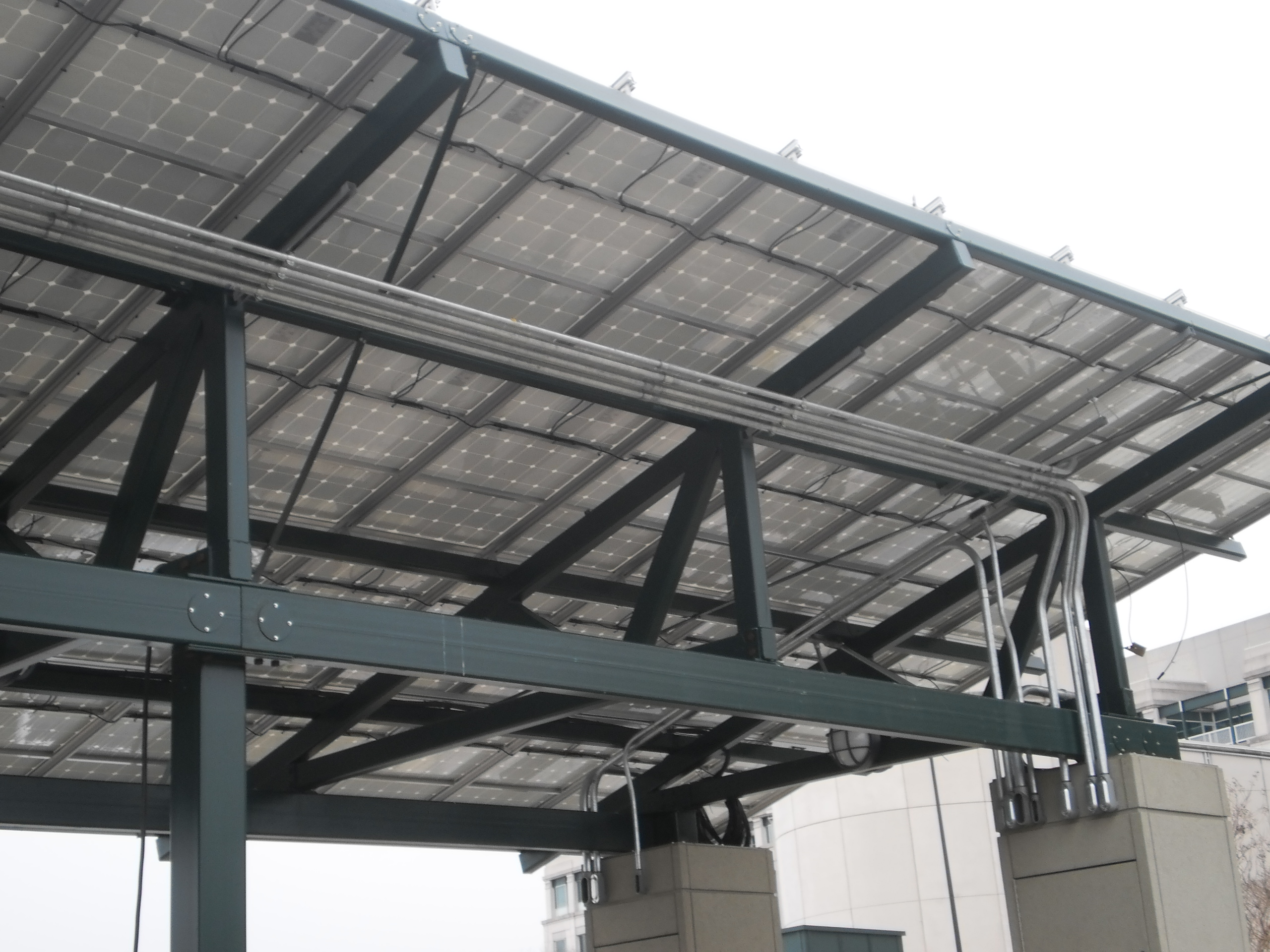
Solar Canopies with Integrated Inverter Bay
What Should Energy Surety Look Like?
Famed architects have noted that some of the worst buildings they have seen were designed by sustainability architects.
Architects and designers may care about image, but typical renewable and distributed energy projects have a reputation for being all substance and no style. In other words, performance without aesthetics.
The “look and feel” of energy projects inevitably play a role – along with economic performance and sustainability – in determining a project’s success. Simply put, if a proposed project’s design doesn’t appeal to stakeholder senses and preferences, it has a lower probability of reaching a successful end.
PowerSurety employs architectural design tools and expertise early-on in project development so that finished projects look as smart as they actually function.
Architectural Elements Integrate Energy Surety Features into Campus Aesthetics
Early Development 3-D Designs and Renderings
Architectural aesthetics, historic preservation, and energy surety are not mutually exclusive. Conflicts between efforts to maintain site aesthetics and/or preserve historic resources on one hand, and efforts to develop renewable energy and energy surety projects on the other, arise when such projects either do not include designs that integrate into historic sites or they introduce adverse aesthetics and other effects on landmarks and landscapes.
PowerSurety develops 3-D design concepts and renderings early in the design process to better enable stakeholders to make informed decisions and shape not only the function of systems, but also their architectural look and feel.
LEED Renewable Features – Recycled Pavers for Canopy Walkways
Comprehensive LEED Approach
Using energy projects to enhance LEED certification for installations is an outward demonstration of commitment to the environment. PowerSurety assists facility owners in keeping pace with sustainability practices with subject matter expertise on USGBC standards and industry best practices in incorporating them into energy projects.
Over the past two decades, the move towards LEED and sustainable building practices for new building construction has been driven greatly by the environmental and lifecycle economic and cost benefits that result from implementing green design approaches.
Energy projects designed to augment LEED certification use resources more efficiently and effectively when compared to those that do not. Performing due diligence on the lifecycle cost impact of incorporating these LEED elements early-on in project development is essential to the successful implementation of design measures into a cost-effective and viable project. PowerSurety understands from previous project experience that sustainable upgrades create healthier work and living environments, but that these benefits can only be enabled through commercially and economically viable approaches.
Integrated and Pre-Fabricated Modular Approaches Minimize Site Disruption
Typical canopy PV systems are typically installed with inverters, combiner boxes, and auxiliary electrical boxes constructed on pads adjacent to solar canopies or hanging from the canopy support structures themselves. Many installed systems are unsightly, conflict with site architectural and historical standards, and expose sensitive inverter electronics to the elements.
The design solution utilized for CMS was based on an integrated concept which ensured a streamlined and elegant design. The inverters, combiner boxes, and other ancillary equipment were built-in to aesthetically pleasing canopy columns that hide unsightly power and electronic components while allowing free movement of air to prevent overheating issues and degradation of life expectancy.
Installed cost is always a key criterion for any successful renewable energy project, especially when it is being procured under a sealed-bid acquisition methodology. This is particularly true for PV systems installed on existing buildings and sites wherein the complexity of existing conditions and disruption to site operations is far greater than would be experienced on greenfield sites. For this reason, PowerSurety places a high premium on developing integrated modular systems that lend themselves to lower cost and efficient construction means/methods.
For instance, the integrated inverter requires one housing for both the column and inverter and saves space and weight. Locating the inverter as close as possible to the PV modules decreases wiring lengths and cost. Additionally, the space formerly occupied by the inverter is now freed up for ease of passage on walkways, the tops of parking structures and in parking lots.
Walkway Inverters Integrated into Canopy Columns
